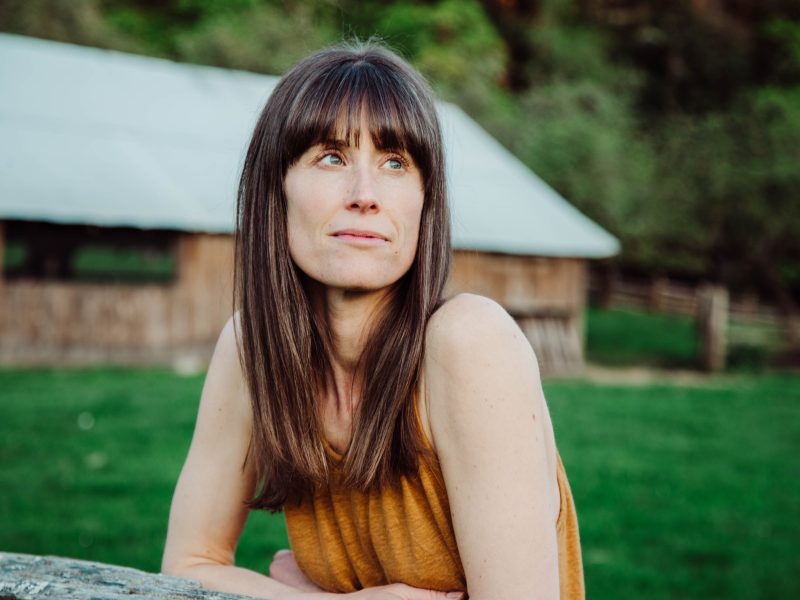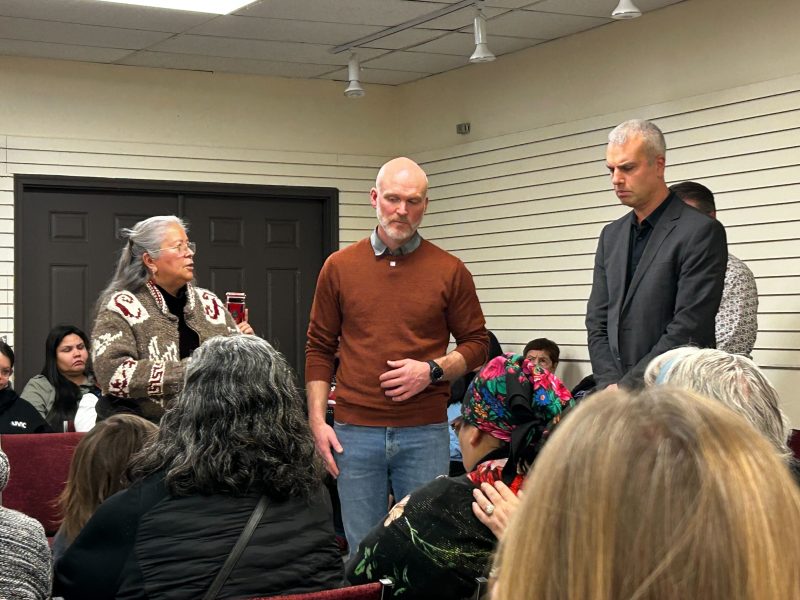
When Island Health announced in April 2020 that the Cowichan Wellness and Recovery Centre would be located across the street from the Warmland House shelter and near two local schools, parents, educators, neighbours, and local business owners raised public safety concerns.
After operating for more than a year, clients of the centre say it has been an important life-saving resource that provides them with a sense of community and connects them to vital services such as an Overdose Prevention Site (OPS), health care and detox treatment.
But safety concerns in the neighbourhood persist, with police calls to the area increasing over the last year and reports of fires, graffiti and crime coming from community members. To address this, local organizations, citizens and stakeholders are coming together to come up with solutions that not only support the centre and its clients, but the general community as well.
Read also: Clients consider the Cowichan Wellness and Recovery Centre a lifesaver
Wellness centre clients trying to clean up messes and build bridges
Head of North Cowichan/Duncan RCMP Inspector Chris Bear says his officers have been building relationships and understanding with people on the street, including through the innovative Building Bridges program where a small group of officers and people with lived experiences on the street meet for coffee and share their perceptions and experiences.
The program, which launched last summer and has had six meetings, was developed by RCMP sergeant Ken Beard and Tracy, a peer worker with the Cowichan Community Action Team who lived on the street for about 11 years before getting into one of the units at the Sq’umul’ Shelh Lelum’ supportive housing development. She has also been a regular client of the wellness centre and overdose prevention site.
Tracy explains that she came up with the idea of meeting with RCMP officers after noticing rising tensions between law enforcement and people who are unhoused or on the streets.
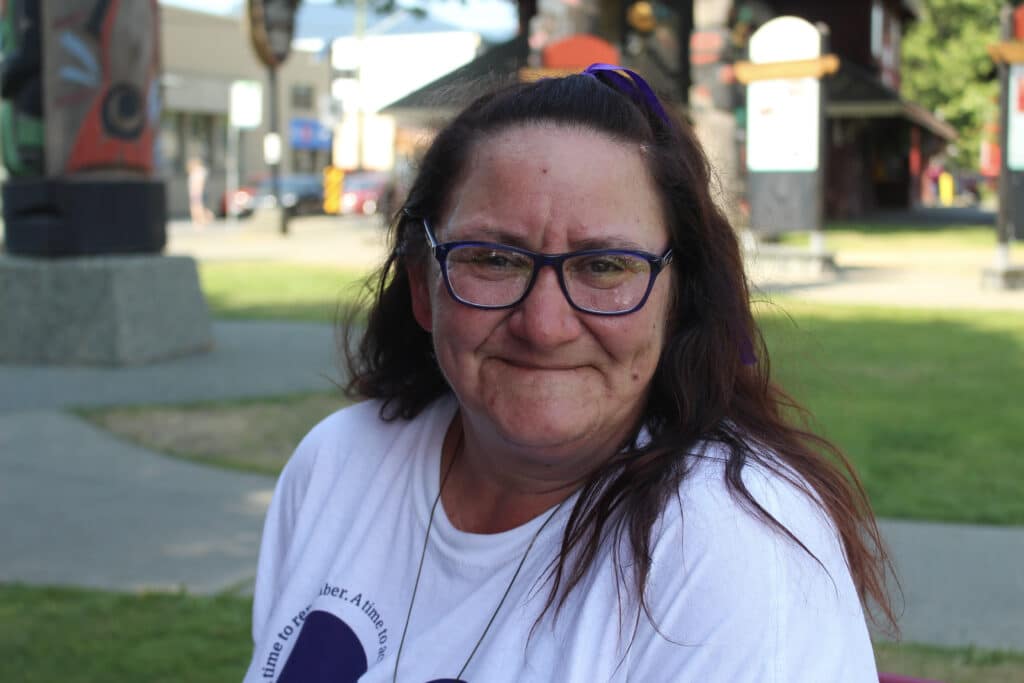
“So I thought, ‘[What] if I could get a couple of police officers and a couple of street people to just sit down and lower the authority level and be human beings talking together face to face?’” Tracy says. “I’m bringing both sides together and kind of mediating, letting the police see that we’re human beings too.”
She says the program appears to be helping based on feedback from her friends who live on the street and from Sgt. Beard, who all tell her that interactions are becoming less confrontational. Inspector Bear says gaining a better appreciation of life on the street makes his police officers better at their job.
“I know our officers involved have had their eyes opened to what individuals have gone through and how police actions can affect others,” Bear says. “We’re aware of what has happened in their life and what we can do to drop down barriers and not be seen as the enemy, so to speak, but being there to help.”
Another effort spearheaded by people with lived experience on the street is the Street Smart Outreach Team, which cleans up the area and also distributes Narcan kits and safer consumption kits after the overdose prevention site closes. The team was created by people living at The Village temporary housing site located at 610 Trunk Rd., including founding member Jeffrey “Disco” Bell, 45, who lived on the streets of Duncan for several years until he was able to stay at the COVID-19 tenting site on St. Julien Street before moving over to The Village.
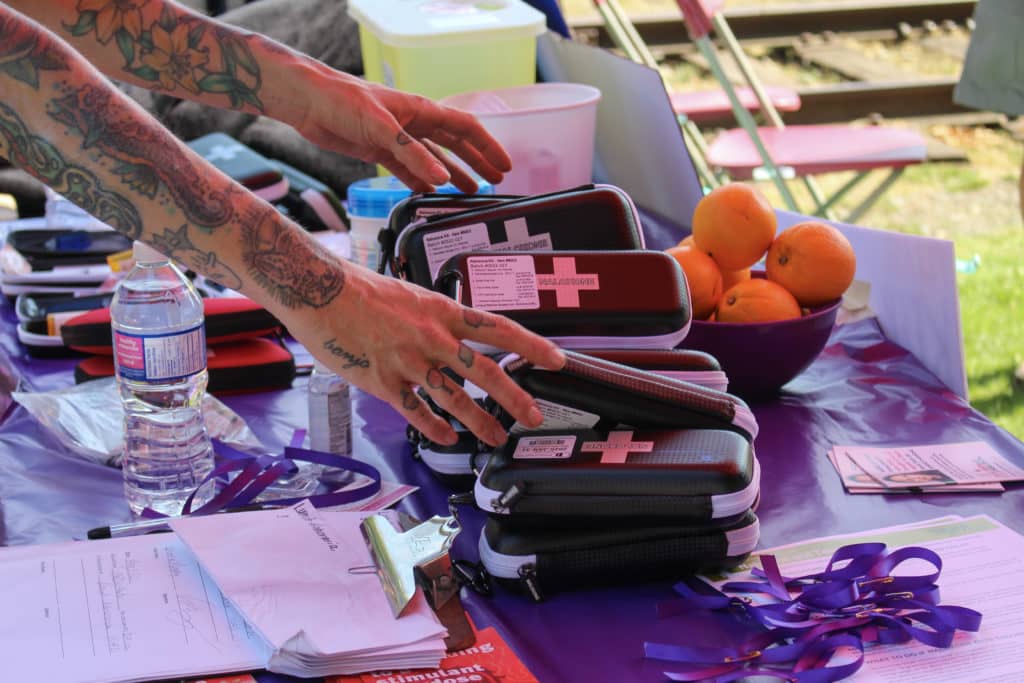
Bell hopes that the cleanup efforts will help improve the reputation of people who use the wellness centre. He says that while the centre is better for the street community, he acknowledges that it’s not better for the overall community having the wellness centre and Warmland Shelter in a residential area. “It’s all about the outside community, the way that people think of it,” he explains.
Bell says it’s frustrating when people on the street don’t clean up after themselves. “We try to share the message that it’s not all of us, and that a lot of us are cleaning up these messes that we see that aren’t even ours.”
Bell adds that having the wellness centre means there are fewer messes to clean up because people are able to safely use drugs at the centre and not leave behind any mess.
Concerns about the site haven’t fallen on deaf ears
Jessica Huston, operations manager with Duncan Mental Health and Substance Use Services says Island Health holds biweekly, as well as ad hoc meetings, with its community partners, which include the RCMP, North Cowichan and Duncan bylaw, Cowichan Tribes outreach, Footprints Security, the Cowichan Valley School District, and the Canadian Mental Health Association Cowichan Valley Branch. The purpose of these meetings is “to look at how we can support people that we’re all mutually working with and how we can support the centre and how we can support the neighbourhood,” Huston says.
She says that the hiring of a lunch-hour security person outside the wellness centre is an example of something that came out of the conversations Island Health has with its community partners.
Island Health also created a Wellness and Recovery Centre Community Advisory Committee that has been meeting regularly since September 2021 to share information, get feedback and address people’s concerns. Cailey Foster, peer coordinator of the Cowichan Community Action Team, is a member of the committee and says that representatives from Island Health and Lookout Housing, which operates some of the services at the centre including the overdose prevention site, are “very receptive to complaints and to criticism.”

North Cowichan Mayor Rob Douglas has been meeting with parents, residents and business owners to listen to their concerns and figure out what the municipality can do to address them. He notes that the municipality is limited in what it can do, and had no say over the wellness centre location and has no ability to relocate it.
“We’re going to do whatever we can as a municipality within our powers, but ultimately, to really tackle these issues, we’re going to need increased attention from the senior levels of government,” Douglas says.
North Cowichan has been discussing the issue with the region’s MLAs and has submitted requests to the province for additional support, Douglas says. He is also working with the City of Duncan, Cowichan Tribes and Cowichan-Malahat-Langford MP Alistair MacGregor to advocate at the federal level.
Douglas says the municipality has stepped up bylaw patrols in the area and also partners with the City of Duncan to fund needle and garbage pickup and private security patrols. While acknowledging that this doesn’t address the root of the problems, he says it does help “manage some of the impacts.”
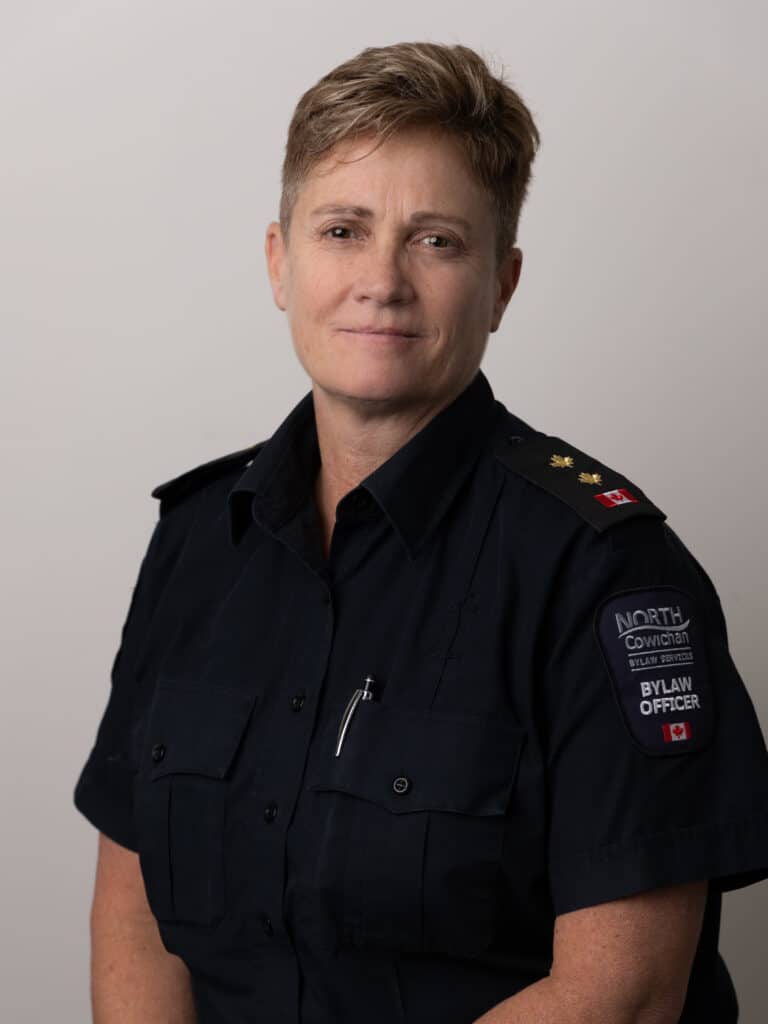
North Cowichan has four bylaw officers, and at least two of them try to head to the Warmland area at the start of their 8 a.m. to 4 p.m. weekday shift, says Kim Ferris, manager of bylaw and licensing services. They also respond to complaints from residents and business owners.
“We don’t play an enforcement role. We play an ambassador role where we try to work with people down there. They get to know us and trust us and we are checking on their welfare every day,” says Ferris, whose position was created two years ago. “It’s a bit of a balancing act between doing that and making sure the people that live in the area and businesses are feeling safe, [and have] access to where they want to go.”
Last fall, the municipality closed its corridor safety office, which it had run jointly with the City of Duncan until the city pulled out in August 2022. Ferris says she is hopeful that another location will be found for the office.
Ferris says her officers have been developing great relationships with many of the people on the street.
Interpretations differ about why police calls in the Warmland area rose last year
From all accounts, the OPS moving from Trunk Road near downtown Duncan to what the RCMP refers to in their annual report as Warmland & Area has increased the number of unhoused people visible in that area. Police calls to the area, which had decreased by 27 percent between 2020 and 2021, rose 49 percent over the past year, with a large spike in calls occurring around 7 p.m. when the OPS closes for the day.
To critics of the centre’s location such as Will Arnold, owner of Experience Cycling, this was to be expected and the crime statistics are an indication that putting a place for people to use drugs across the street from a homeless shelter is too much for the neighbourhood. He says that the wellness centre has attracted more people to the area, resulting in increased crime, graffiti, drug trafficking and garbage.
“It should have been in a different place, there’s no question about it,” Arnold says.
North Cowichan/Duncan RCMP inspector Chris Bear says it’s hard to pinpoint cause and effect for the increase in police calls to the Warmland area. “I can’t say for certain that [OPS relocating] was the root cause of everything because there was a lot of other clientele going around and doing things,” he says.

Bear says that whenever something new moves into an area, police get more calls for service because people are sensitive to the changes. Two of the largest files in 2022 in the Warmland area were 430 calls for unspecified assistance, an 88-percent increase, and 147 calls for suspicious occurrences, a 67-percent increase. Bear explains that these are catchall categories, where citizens call the RCMP about something that doesn’t seem right but nothing provable is found.
The RCMP has a four-person corridor enforcement unit dedicated to the Warmland area. According to Bear, another factor to consider when interpreting the area’s crime statistics is that the more police are out patrolling, the more incidents they may encounter.
He adds that it’s important to note that the Cowichan Valley is not experiencing the levels of violent crime that is plaguing other parts of B.C. Last year in the Warmland area, there were 78 assaults, up from 44 the previous year, 65 percent of which occurred in streets, parking lots or open areas and parks, according to the RCMP annual report.
Huston, who oversees the wellness and recovery centre, says the increase in police calls to the area isn’t surprising and isn’t necessarily a cause for alarm.
“The data will absolutely have gone up because people are more comfortable to access police and police have said, ‘please call us if there are any concerns,’” says Huston, who explains that the centre regularly calls the RCMP for support. “They [the police] want to help mitigate any risk to individuals in the community, to staff that are working in the area, to other citizens, etc. So I think that’s been really working well. It sounds bad, when you read it, like increased calls, but I think it’s actually been positive in the same way.”
School board president says wellness centre location is not good for students
In September 2020, the Cowichan Valley School District 79 school board sent a letter to Island Health requesting that the wellness centre not be sited so close to Quamichan School (grades 8-9) and Alexander Elementary (K-7). Current board chair Cathy Schmidt says that the board’s concerns have unfortunately “come true, to an extent.”
Read also: Proposed wellness centre prompts consideration to close Quamichan School campus

From 2018 to 2020, Schmidt served as board president for the Cowichan branch of the Canadian Mental Health Association, which manages the Warmland shelter. She says that after some changes were made in response to the branch being put on a one-year probation, the area around the shelter began to see less criminal activity.
But since the wellness centre opened 16 months ago, Schmidt says criminal activity has “definitely” increased in the area. She reports that there have been some incidents involving students and people on the street, as well as ongoing complaints from parents about the “gauntlet” their kids have to pass through.
While her “heart breaks for the folks that are out on the streets,” Schmidt says the situation is unfair for students.
“Our kids have got to walk by them while they’re shooting up, or they’ve got to walk by them when somebody’s deceased or they’ve got to walk by them when the fires are going. This is becoming a normal that kids shouldn’t have to look at as normal,” Schmidt says. “We know that our kids are fragile right now. And so what we fear is that we’re putting them in the line of fire by having what we see every day out front of the wellness centre.”
She questions why Island Health in 2018 recommended that municipalities not allow cannabis retail stores within 300 metres from a school yet placed an OPS within that distance of a school for Grade 8 and 9 students. “Why does it have to be where our students are?” Schmidt asks.
Island Health sent The Discourse this statement explaining the reasoning behind the location.
“The Cowichan Valley Wellness Recovery Centre was situated near the longstanding Warmland shelter to serve the high risk and vulnerable population already present in the area,” the statement says. “The WRC has enabled these people – who were there already – to access health care services and use substances indoors in a safe environment. With the ongoing public health emergency of the toxic drug crisis, Island Health provides health care services where people need them.”

Schmidt says the school district has incurred a number of costs because of the street population in the area. These include weekly power washing outside the schools to remove feces and urine; a grounds crew person dedicating the first hour of their shift to do needle and other garbage cleanup before school starts; two noon-hour supervisors hired to supervise the area between Quamichan School and McDonald’s and Wendy’s as students go out for lunch; and various permanent and temporary fencing, including around a parking lot that was created along the northeast corner of the Beverly Street roundabout after needles were regularly found in the bushes there.
“It is just a shame to lose that green space, but we needed to build some kind of a buffer for these folks not to be enticed to come on down to school district property,” she explains. “All of that is coming out of classroom dollars.”
Frustrated local business owner considers wellness centre a ‘Band-Aid solution‘
Each morning, Will Arnold comes into work at his Experience Cycling bike store two hours early to clean up messes outside his store that occurred overnight. He says that the addition of the wellness centre, and particularly the OPS, to the neighbourhood has exacerbated the problem.
Arnold says that he supports the services provided by the wellness centre, but in addition to objecting to its location, he is upset that not enough is being done after hours to protect clients and the overall community.
“These people are left to the wolves as soon as the OPS site closes at seven o’clock; they’re pushed off the property and they’re sitting in front of the businesses and we’re dealing with the fires, the defecations, and the parties that can have broken windows, and the graffiti,” he says. “Our businesses are suffering at night, and these people are suffering at night. If these people are in the street and not feeling safe, and the rest of the community is not feeling safe, what are we providing in the greater picture?”
After work, Arnold walks along the highway corridor engaging with people on the street, handing out items such as coffee, clothes and warming pads, while asking them to respect the neighbourhood and not have fires. He offers to phone the police if they need assistance.
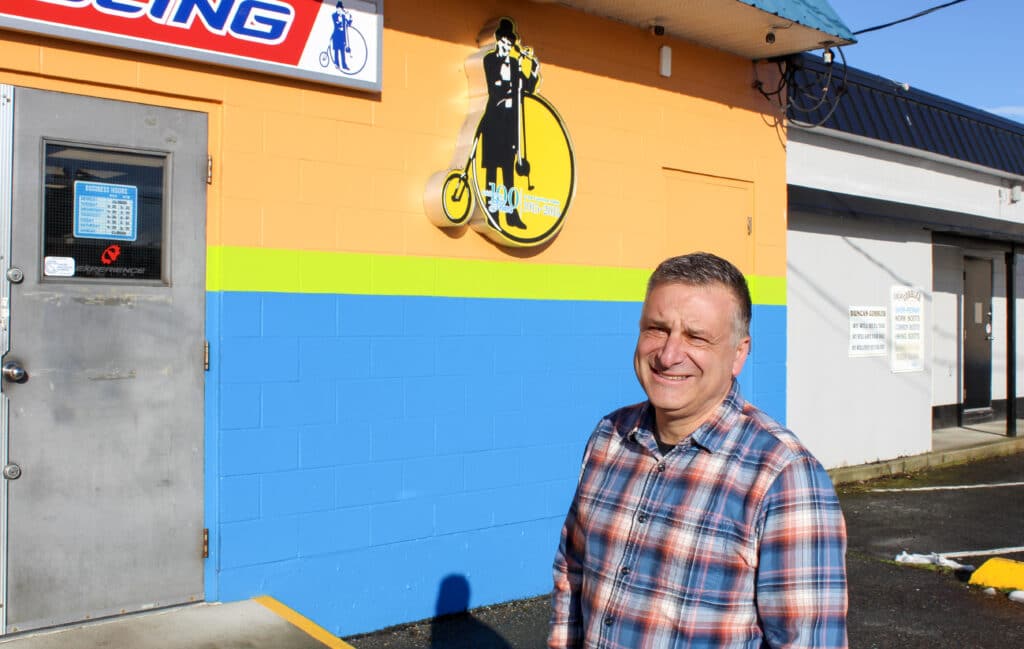
Arnold says he has helped get six people off the street in the past few years, including one man who now works at the Duncan Butcher Shop, and that people come to him every day asking for help.
But all too often, he says there aren’t detox and treatment facilities available for someone who is ready to make a change. That is why he considers the wellness centre “a Band-Aid solution” that doesn’t address the root of the problem.
Arnold says that by working together, his and other local businesses have turned around Whistler Street, from his store on down to the Dairy Queen. The RCMP 2022 annual report found that police calls along the Trans Canada Highway Corridor decreased 12 per cent.
While Arnold says the RCMP have been “absolutely amazing” when he calls them, he would like to see more security patrols, as well as outreach workers doing nighttime wellness checks. He would also like to see “constructive” places for people on the street to congregate, such as an overnight warming shelter to serve people who are not able to be at the overnight Warmland House shelter, which is a drug-free zone where people aren’t allowed to come and go.
Arnold worries that the street population is increasing in the area. He says that while he has gotten to know many of the people on the streets, including some who previously were customers at the bike store, he is seeing new faces all the time.
“It’s gonna grow in this town, and we need to get on top of it.”
Daytime warming and cooling centre under consideration for the neighbourhood
According to Schmidt, the school board’s opposition to the location of the wellness centre is not “NIMBYism.” Rather, she says, their backyard was already “full” before the wellness centre came in because of the Warmland shelter, and is now “overflowing.”
That’s why Schmidt is concerned that one of the options under consideration for the proposed “A Place to Be” warming and cooling centre is in the outdoor area at Warmland. She says that the location is problematic because the shelter is a drug-free zone.
“So that means that they will leave and be still on the York Street corridor or in that neighborhood to use,” says Schmidt. “So are we creating a bigger problem because we know they can go in there to warm and cool, however, they still need to use?”
The school district also objects to a site on Garden Street under consideration for the warming and cooling centre because of its proximity to Cowichan Secondary, which Schmidt says already has issues with “unauthorized citizens on the grounds” at night.
North Cowichan Mayor Douglas says the municipality has been working closely with the Cowichan Housing Association and the City of Duncan to find possible sites for A Place to Be, after it was determined that the overflow parking lot at the Cowichan Community Centre was not going to work out. He explains that the decision about where to site the warming and cooling centre is up to the Cowichan Housing Association, which holds the grant for the centre.
Douglas adds that while it was initially thought that siting the daytime warming centre at Warmland would require going through a municipal permitting process, upon further examination it was determined that the way Warmland House was set up, it is exempt from the municipality’s zoning regulations.
In the meantime, the meetings that the wellness centre convenes with stakeholders and the advisory committee will continue to address challenges and police, bylaw and private security will keep on the beat to make the area as safe as possible.
Bear advises citizens to call the police if they encounter something concerning, but also not to assume that everybody on the street is a bad person.
“Everyone is interested in making things better not only just for the clients on the street, but the employees, the people in the community, the residents because things have hopefully gotten as worse as they’re going to be,” Bear says.

